Africa is a continent of immense diversity, offering a wide range of unique experiences for travellers. Whether you’re an adventurer seeking breathtaking landscapes, a wildlife enthusiast looking to get up close and personal with the Big Five, or a culture buff interested in exploring the continent’s rich heritage, Africa has something for everyone. In this article, we’ll take a closer look at some of the top reasons to visit Africa, including:
Spectacular natural beauty
Africa is home to some of the world’s most stunning natural wonders, including the towering Mount Kilimanjaro, the magnificent Victoria Falls, and the sprawling Serengeti National Park. From the rolling savannahs of Kenya to the rugged peaks of Ethiopia, Africa’s landscapes are nothing short of breathtaking.
Incredible wildlife
Africa is home to an abundance of unique and fascinating wildlife, including elephants, lions, giraffes, and zebras. Go on a safari to see these incredible creatures up close, or visit one of Africa’s many national parks to experience the thrill of being in the wild.
Rich cultural heritage
Africa has a rich and diverse cultural heritage that is worth exploring. From the ancient pyramids of Egypt to the colourful markets of Marrakech, Africa is full of hidden gems that offer a glimpse into the continent’s fascinating history and culture.
Vibrant music and dance
Music and dance are an integral part of African culture, and there’s no better way to experience this than by attending a live performance. From the infectious beats of West African drumming to the soulful melodies of South African jazz, Africa’s music scene is truly one of a kind.
Delicious cuisine
African cuisine is as diverse as the continent itself, with each region offering its own unique flavours and dishes. Whether you’re a fan of spicy West African stews or savoury South African braais (barbecues), there’s something for everyone to enjoy.
In conclusion, Africa is a continent full of surprises and hidden gems that are just waiting to be discovered. So, whether you’re a first-time visitor or a seasoned traveller, be sure to add Africa to your list of must-visit destinations.
The Geography of Africa
Africa is the second-largest continent in the world, covering over 30 million square kilometres. It is surrounded by water on three sides, with the Atlantic Ocean to the west, the Indian Ocean to the east, and the Mediterranean Sea to the north. The continent is home to 54 countries, each with its own unique geography, culture, and history.
The geography of Africa is incredibly diverse, with everything from arid deserts to lush rainforests. The continent can be divided into several distinct regions:
Northern Africa
This region is dominated by the Sahara Desert, the largest hot desert in the world, which covers most of the region. It is also home to the Atlas Mountains and the Nile River, which flows through Egypt and Sudan.
Western Africa
This region is characterised by its coastal plains, plateaus, and savannas. It is home to the Niger River, one of the largest rivers in Africa, as well as the Congo River and the Sahara Desert.
Central Africa
This region is dominated by the Congo Basin, which is home to the second-largest rainforest in the world. The region is also home to many rivers, including the Congo River, the second-largest river in the world by volume.
Eastern Africa
This region is home to some of Africa’s most iconic landmarks, including Mount Kilimanjaro, the highest mountain in Africa, and the Great Rift Valley, which stretches from Syria to Mozambique. It is also home to the Serengeti National Park and the Maasai Mara National Reserve, which are famous for their wildlife.
Southern Africa
This region is characterised by its vast deserts, including the Kalahari and Namib deserts. It is also home to the Zambezi River and Victoria Falls, as well as the Cape of Good Hope, the southernmost point of the African continent.
The Sahara Desert
The Sahara Desert is the largest hot desert in the world, covering an area of approximately 3.6 million square miles (9.4 million square kilometres) across North Africa. It is roughly the same size as the entire United States.
The Sahara Desert is known for its harsh and unforgiving environment, with extreme temperatures, arid landscapes, and shifting sand dunes. Despite these challenges, the Sahara is home to a wide range of plant and animal species that have adapted to survive in this unique environment.
Some of the most iconic landmarks in the Sahara Desert include the sand dunes of Erg Chebbi in Morocco, the Tassili n’Ajjer rock formations in Algeria, and the ancient city of Timbuktu in Mali. The Sahara has also played a significant role in human history, with evidence of human activity dating back over 10,000 years.
The Sahara has been inhabited by various ethnic groups and cultures throughout its history, including the Tuareg, Berbers, and Arabs. These groups have developed unique cultural practices and traditions that are still evident in the region today, such as the vibrant textiles and jewelry of the Tuareg people.
The Sahara Desert is an important natural and cultural landmark in Africa, and continues to captivate and inspire people from around the world.
Is the Middle East part of Africa or Asia?
The Middle East is a region that is often considered to be part of both Africa and Asia. This is because it is located at the intersection of the two continents and has historical, cultural, and geographic ties to both.
The term “Middle East” generally refers to the countries located in the western part of Asia, including countries such as Iran, Iraq, Saudi Arabia, and Turkey. However, some definitions also include countries in North Africa, such as Egypt, Libya, and Tunisia.
Geographically, the Middle East is often considered to be part of Asia, as it is located entirely within the Asian continent. However, the region also has historical and cultural ties to Africa, particularly in the countries located in North Africa.
Overall, the classification of the Middle East as part of Africa or Asia can be somewhat ambiguous and depends on the specific context and definition being used.
The History of Africa
The history of Africa is rich and complex, spanning millions of years of human existence on the continent. Some of the earliest evidence of human life can be found in Africa, including the remains of Australopithecus, a human ancestor that lived over 4 million years ago.
Over the centuries, Africa has been shaped by a wide range of cultures and civilizations. Ancient Egypt, one of the most iconic civilizations in world history, emerged in the Nile River valley around 3000 BCE and lasted until the Roman conquest in 30 BCE. The civilization built incredible monuments, including the Great Pyramid of Giza and the Sphinx, and developed a sophisticated system of writing and mathematics.
In the centuries that followed, Africa was shaped by a series of powerful empires and kingdoms. The Kingdom of Kush emerged in what is now Sudan around 1000 BCE and lasted until the 4th century CE. The Kingdom of Ghana, one of the first great empires in West Africa, emerged in the 6th century CE and lasted until the 13th century CE. Other notable empires and kingdoms include the Mali Empire, the Songhai Empire, and the Kingdom of Zimbabwe.
In the 15th and 16th centuries, Africa was thrust into the global spotlight due to the arrival of European explorers and traders. European powers established colonies throughout Africa, including the Portuguese in Angola and Mozambique, the Dutch in South Africa, and the British in Nigeria, Kenya, and other parts of the continent.
Colonisation had a profound impact on Africa, with European powers exploiting Africa’s resources and often pitting ethnic groups against each other. In the 20th century, many African countries began to push back against colonial rule, with many achieving independence in the decades following World War II.
Today, Africa is a vibrant and diverse continent, with 54 independent countries each with its own unique culture, history, and challenges. While Africa has faced many obstacles over the centuries, its history is a testament to the resilience and creativity of its people.
African Culture
African culture is incredibly diverse and complex, shaped by centuries of history, geography, and human interaction. The continent is home to over 1.3 billion people and over 3,000 different ethnic groups, each with its own unique culture, traditions, and languages.
Despite this diversity, there are some common themes and elements that can be found across many African cultures. These include:
- Oral traditions: Many African cultures have a rich tradition of storytelling, passed down through generations via oral histories, legends, and myths.
- Music and dance: Music and dance are an integral part of African culture, with a wide range of styles and genres found throughout the continent. African music often features complex rhythms, intricate melodies, and vocal harmonies.
- Art and craftsmanship: African art and craftsmanship are renowned for their beauty and skill, with many traditions dating back hundreds or even thousands of years. This includes everything from pottery and weaving to sculpture and painting.
- Religion and spirituality: Religion and spirituality play a central role in many African cultures, with a wide range of beliefs and practices found throughout the continent. This includes both traditional religions and more modern religions such as Christianity and Islam.
- Cuisine: African cuisine is incredibly diverse, with each region offering its own unique flavours and dishes. Common ingredients include grains such as rice and maize, as well as meats such as chicken, beef, and goat.
African culture is constantly evolving and adapting to changing circumstances, and is influenced by both internal and external factors. Despite the challenges faced by many African countries, the continent’s culture remains a source of strength and resilience, with a rich history and vibrant traditions that continue to inspire and captivate people around the world.
African Cuisine
African cuisine is incredibly diverse, reflecting the continent’s wide range of cultures, climates, and available ingredients. The cuisine varies widely from region to region, with each area having its own unique flavours and cooking techniques. Here are some examples of popular African dishes and ingredients:
- Tagine: This is a dish that is popular in North Africa, particularly in Morocco. It is a slow-cooked stew that is typically made with meat, vegetables, and spices, such as cumin, cinnamon, and turmeric.
- Jollof rice: This is a popular dish in West Africa, particularly in Nigeria, Ghana, and Senegal. It is a flavorful rice dish that is typically cooked with tomatoes, onions, and spices, such as ginger, garlic, and chilli pepper.
- Braai: This is a traditional South African barbecue, typically featuring grilled meats such as lamb, beef, and chicken. The meat is often seasoned with a blend of spices and herbs, such as coriander, cumin, and garlic.
- Injera: This is a flatbread that is commonly eaten in Ethiopia and Eritrea. It is made from teff flour and is typically served with a variety of stews and sauces.
- Couscous: This is a North African staple that is made from small grains of semolina flour. It is typically served as a side dish or mixed with vegetables and meat to make a hearty meal.
- Plantains: This is a type of banana that is commonly eaten in West and Central Africa. It can be cooked in a variety of ways, such as fried, roasted, or boiled, and is often served as a side dish.
These are just a few examples of the many delicious and varied dishes that can be found throughout Africa. African cuisine is known for its bold flavours, use of spices and herbs, and emphasis on fresh, locally sourced ingredients.
North Africa
North Africa is a region that comprises several countries located in the northern part of the African continent, including Morocco, Algeria, Tunisia, Libya, and Egypt. It is a region that is known for its rich history, diverse culture, and stunning landscapes.
North Africa is a land of contrasts, with everything from vast deserts to lush forests and fertile valleys. The Sahara Desert dominates much of the region, with its shifting sand dunes and arid landscapes. The Atlas Mountains, which run through Morocco, Algeria, and Tunisia, offer a stunning contrast to the desert, with snow-capped peaks and lush valleys.
North Africa is also home to many iconic landmarks and historical sites, such as the ancient ruins of Carthage in Tunisia, the pyramids of Egypt, and the medinas (old cities) of Morocco. The region is also known for its vibrant and diverse culture, with influences from Berber, Arab, and European cultures.
Cuisine is an important part of North African culture, with each country offering its own unique dishes and flavours. Common ingredients include couscous, spices such as cumin and coriander, and meats such as lamb and chicken. Tea is also an important part of North African culture, with mint tea being a popular and refreshing beverage.
North Africa is a fascinating and complex region that offers a wealth of opportunities for travellers and adventurers. Whether you’re interested in exploring ancient ruins, experiencing vibrant culture and cuisine, or simply soaking up the stunning landscapes, North Africa has something for everyone.
Sub-Saharan Africa
Sub-Saharan Africa is a region that comprises the countries located south of the Sahara Desert, including countries such as Nigeria, Ethiopia, South Africa, Kenya, Ghana, and Tanzania. It is a region that is known for its rich cultural heritage, diverse wildlife, and stunning natural beauty.
Sub-Saharan Africa is home to some of the world’s most iconic wildlife, including elephants, lions, giraffes, and zebras. Many countries in the region have established national parks and reserves to protect these animals and their habitats, such as the Serengeti National Park in Tanzania and Kruger National Park in South Africa.
The region is also known for its stunning landscapes, which range from rolling savannahs to lush rainforests and towering mountains. Mount Kilimanjaro, the highest peak in Africa, is located in Tanzania, while the Congo Basin in Central Africa is home to the second-largest rainforest in the world.
Sub-Saharan Africa is a region with a rich and diverse cultural heritage, with hundreds of different ethnic groups and languages spoken throughout the region. Traditional music and dance are an integral part of many cultures in the region, with drumming and singing being common forms of expression. Art, crafts, and textiles are also important aspects of many Sub-Saharan African cultures, with vibrant colours and intricate designs being a hallmark of many traditional artworks.
Cuisine in Sub-Saharan Africa varies widely depending on the region, with dishes typically featuring local ingredients and spices. Common ingredients include grains such as rice and maize, as well as meats such as chicken, beef, and goat. Popular dishes include jollof rice in West Africa, injera in Ethiopia and Eritrea, and braai in South Africa.
Overall, Sub-Saharan Africa is a region of incredible diversity and richness, with a wealth of opportunities for travellers and adventurers. Whether you’re interested in exploring wildlife, soaking up the culture, or simply enjoying the stunning landscapes, Sub-Saharan Africa has something for everyone.
When is the best time to visit Africa
The best time to visit Africa depends on the region you are planning to visit, as the climate and weather patterns can vary widely across the continent. Here are some general guidelines for the best time to visit different regions of Africa:
East Africa
The best time to visit East Africa is during the dry season, which runs from June to October. This is the best time for wildlife viewing, as animals are more easily seen in the dry, open savannahs. The wildebeest migration in the Serengeti also takes place during this time, typically in July and August.
Southern Africa
The best time to visit Southern Africa is during the dry season, which runs from May to October. This is the best time for wildlife viewing, as animals are more easily seen in the dry, open savannahs. The cooler months of June to August are also a good time for hiking and other outdoor activities.
West Africa
The best time to visit West Africa is during the dry season, which runs from November to April. This is the best time for wildlife viewing, as animals are more easily seen in the dry, open savannahs. The cooler months of December to February are also a good time for hiking and other outdoor activities.
North Africa
The best time to visit North Africa is during the spring (March to May) or fall (September to November), as temperatures are milder during these seasons. The summer months can be extremely hot, particularly in the Sahara Desert.
Overall, the best time to visit Africa depends on your interests and the region you are planning to visit. It is important to research the climate and weather patterns in the specific area you will be visiting, as well as any seasonal events or wildlife migrations that may impact your trip.
20 essential sights in Africa
Africa is a vast and diverse continent with countless sights and attractions. Here are 20 essential sights in Africa that offer a glimpse into the continent’s rich culture, history, and natural beauty:
- Pyramids of Giza, Egypt
- Serengeti National Park, Tanzania
- Victoria Falls, Zimbabwe and Zambia
- Mount Kilimanjaro, Tanzania
- Djemaa el Fna, Marrakech, Morocco
- Kruger National Park, South Africa
- Sossusvlei Sand Dunes, Namibia
- Table Mountain, Cape Town, South Africa
- Zanzibar Island, Tanzania
- Gorillas in the Mist, Rwanda
- Etosha National Park, Namibia
- Ngorongoro Crater, Tanzania
- Lake Malawi, Malawi
- Fish River Canyon, Namibia
- Robben Island, Cape Town, South Africa
- Tsavo National Park, Kenya
- Chobe National Park, Botswana
- Atlas Mountains, Morocco
- Okavango Delta, Botswana
- Timbuktu, Mali
These 20 sights offer just a glimpse of the incredible diversity and richness of Africa. From stunning natural wonders to iconic landmarks and cultural treasures, Africa is a continent that is ripe for exploration and adventure.

Unveiling the Digital Nomad Haven: Exploring NoMad’s Vibrant Lifestyle

Unveiling the Allure of Million Dollar Highway: A Road Trip Adventure

3 Tempting Reasons to Indulge in Montreal’s Poutine Feast: A Culinary Escapade
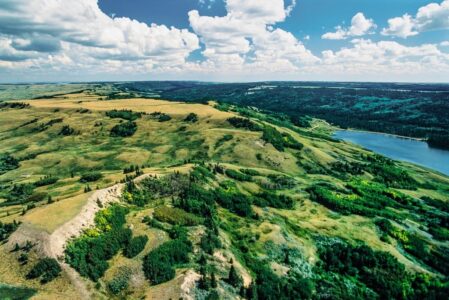
Unveiling Saskatchewan: 5 Road Trip Destinations You Can’t Miss

Embark on an Unforgettable Journey: Exploring Central America via the Pan American Highway
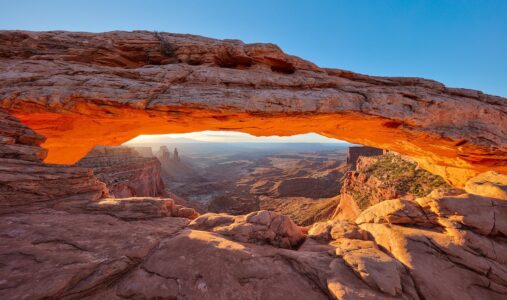
11 Incredible Reasons to Visit Moab, Utah: Exploring the Heart of Adventure

Daytona 500 – 3 Days at America’s Premier Racing Spectacle
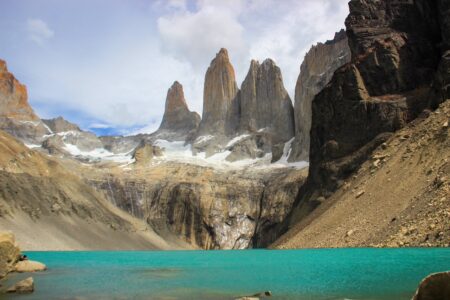
Exploring the Pan American Highway: A Road Trip Adventure

Exploring the Scenic Route 12 in Utah, USA: A Road Trip Adventure
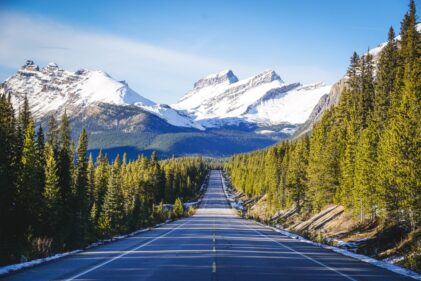
Banff National Park: 7 Thrilling days Await Digital Nomads in The Canadian Rockies

Exploring the Cascade Loop Scenic Highway: An Epic RV Adventure

Exploring Newfoundland in an RV: A Road Trip Adventure

Exploring Trans-Canada Highway: A Memorable RV Road Trip
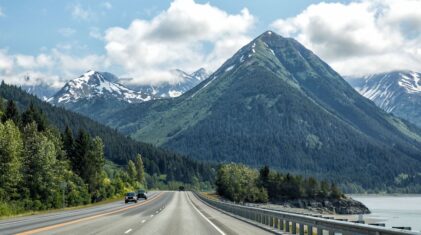
Exploring Seward Highway in an RV: 5 Must-See Stops Along the Way
Embracing the Cuban Rhythms: A Digital Nomad’s Guide to Trinidad, Cuba
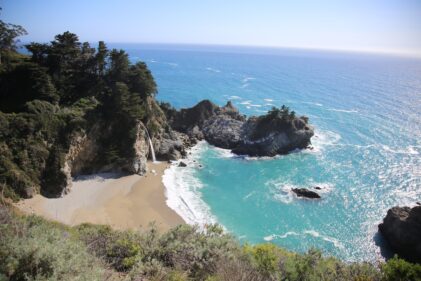
Unveiling the Ultimate Pacific Coast Highway Road Trip Adventure: 7 Must-Visit Stops in Your RV

7 Epic Road Trips Around the Maritimes: Campervan Adventures Await!
Unveiling the Vibrant Arts District of Los Angeles in 3 days
Unveiling the Vibrant Arts District of Los Angeles in 3 days
Unleash Your Inner Synthesizer at Moogfest in Asheville, North Carolina
Driving the Scenic Splendor of Going-to-the-Sun Road: A Digital Nomad’s Ultimate Guide to Montana’s Natural Masterpiece
Discovering the Enigmatic World of “Nighthawks” at the Art Institute of Chicago on a 3 day trip
Discovering San Diego: History, Adventure, and More

The 10 Most Iconic Long-Distance Road Trips in the World
Discovering Atlanta: History, Attractions, and Practical Guide
10 Captivating Reasons to Visit the Dominican Republic

5 Unforgettable Rocky Mountain Road Trips: Where Adventure Meets Majesty
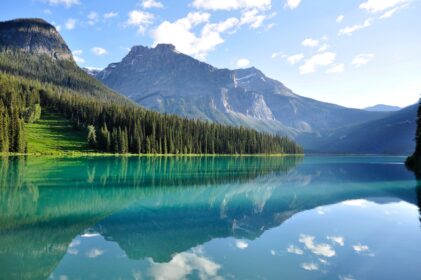
5 Unforgettable RV Road Trips in Canada: Where Adventure Meets Nature

Alaskan Odyssey: 5 Unforgettable RV Road Trips Through the Last Frontier
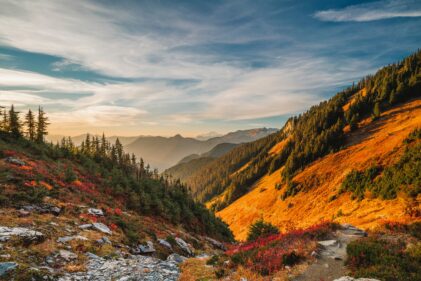
5 Must-Experience RV Road Trips in the Pacific Northwest

10 Unforgettable American Road Trips: Adventures on the Open Road
Explore Canada: Top Ten Must-Visit Destinations
Miami Unveiled: A Journey Through History, Culture, and Cuisine
Discovering the Heart of Texas: A 3-Day Dallas Adventure
Unraveling the Enchanting Essence of Los Angeles: A 3-Day Escapade
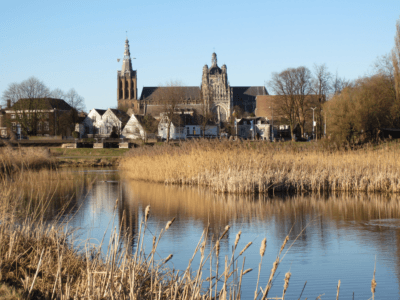
Discover the Vibrant Melting Pot: A 3-Day Adventure in Montreal
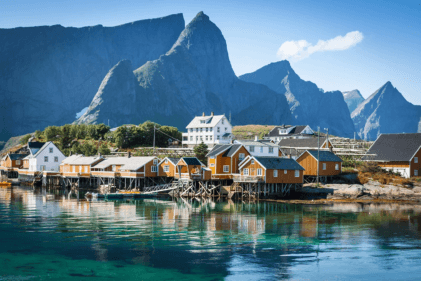
Hiking and Wildlife in Alaska: Exploring America’s Last Frontier
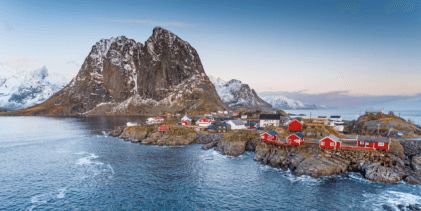
Vancouver Unveiled: A Journey through History, Culture, and Adventure
Exploring the Beauty of Cancun: A Tropical Paradise Awaits!

10 World’s Most Scenic Drives: Discover Breathtaking Landscapes on the Road
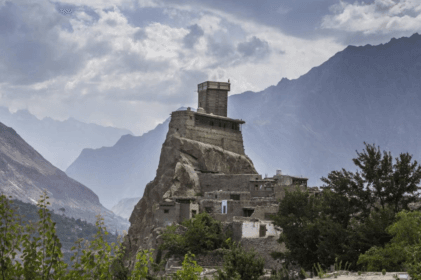
A Historic Sojourn: Discovering Colonial Williamsburg

A Guide to the World’s Most Beautiful Waterfalls: Discover the Natural Wonders
Road Trip to the Rockies: Exploring Colorado’s Scenic Highways
10 Must-Visit Destinations for Nature Lovers

10 Romantic Getaway Destinations That Will Steal Your Heart

Satisfy Your Cravings: 5 Must-Visit Cities for Foodies
Embark on a Journey of a Lifetime: Top Ten Train Journeys Across the Globe
Discover Mexico: 10 Reasons to Explore this Vibrant Country

Discover the Unstoppable Energy of Toronto: A Guide to Canada’s Most Vibrant City

Discover the Top 10 Compelling Reasons to Visit El Salvador Today
Discover the Thrilling Sights and Sounds of Dynamic Chicago

The Majestic Adventure of Whale Watching Trips Around the World
Discovering the Rich History and Vibrant Culture of Boston

San Francisco: The Golden Gate City of Diversity and Innovation
Exploring America: Ten Compelling Reasons to Visit the USA

The City That Never Sleeps: Why New York Should Be on Your Travel List
Discover the Beauty of Banff National Park: Top Ten Reasons to Visit
